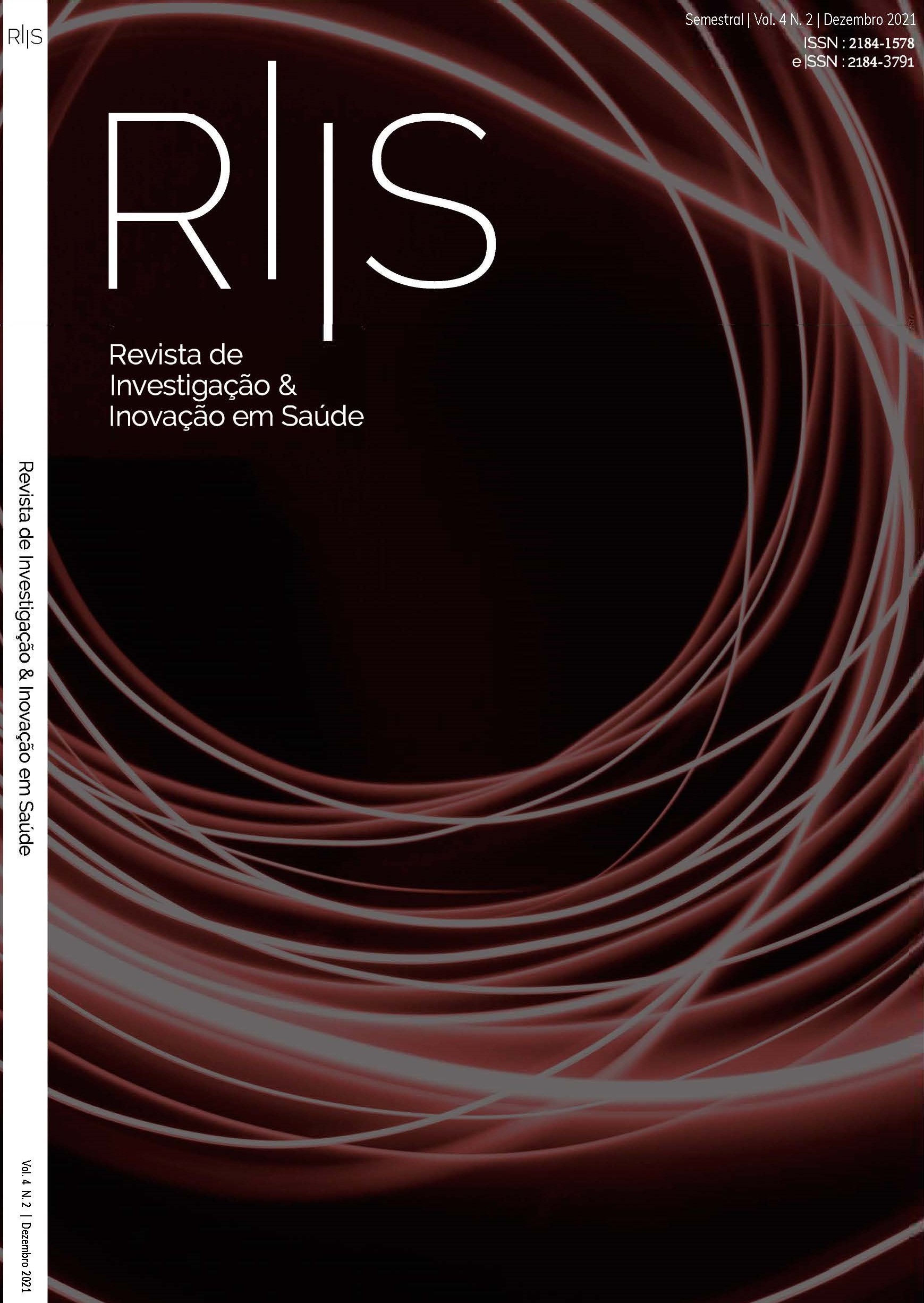Influência do rácio enfermeiro–utente na contenção física em psiquiatria: revisão sistemática
DOI:
https://doi.org/10.37914/riis.v4i2.137Resumo
Enquadramento: a contenção física em serviços de psiquiatria é uma prática comum, que pode comprometer a liberdade, a autodeterminação, a dignidade e a vida da pessoa. Associado aos esforços para minimizar o recurso a esta medida, o fator rácio enfermeiro-utente tem sido pouco estudado. Objetivo: analisar a influência do rácio enfermeiro-utente em serviços de psiquiatria, no recurso à contenção física e isolamento. Metodologia: revisão sistemática da literatura, segundo a metodologia do Joanna Briggs Institute (JBI). Incluíram-se estudos em utentes internados em serviços de psiquiatria, publicados até 10/12/2020. Resultados: triaram-se 1208 estudos, incluindo 4 observacionais. Um analisou o rácio, enquanto os outros analisaram o número de enfermeiros/profissionais. Dois analisaram a taxa e duração do isolamento, enquanto os restantes analisaram também a contenção física. Dois estudos concluíram que o aumento do número/rácio de enfermeiros diminui o uso e duração de medidas restritivas, enquanto nos outros dois se conclui o inverso. No estudo em que se analisou o rácio enfermeiro-utente, observou-se a redução destas medidas. Conclusão: não foi possível determinar uma clara associação entre melhoria do rácio enfermeiro-utente em serviços de psiquiatria e redução do recurso à contenção física e isolamento. Contudo, recomenda-se o reforço da investigação para que se possam identificar resultados robustos.
Referências
Allen, E., Fetzer, J., & Cummings, S. (2020). Decreasing Duration of Mechanical Restraint Episodes by Increasing Registered Nurse Assessment and Surveillance in an Acute Psychiatric Hospital. Journal of the American Psychiatric Nurses Association, 26 (3), 245–249.https://doi.org/10.1177/1078390319878776 DOI: https://doi.org/10.1177/1078390319878776
Aromataris, E., & Munn, Z. (Eds). (2020). JBI Manual for Evidence Synthesis. https://doi.org/10.46658/JBIMES-20-01 DOI: https://doi.org/10.46658/JBIMES-20-01
Bowers, L., & Crowder, M. (2012). Nursing staff numbers and their relationship to conflict and containment rates on psychiatric wards-a cross sectional time series poisson regression study. International Journal of Nursing Studies, 49(1),15-20. https://doi.org/10.1016/j.ijnurstu.2011.07.005 DOI: https://doi.org/10.1016/j.ijnurstu.2011.07.005
Direcção Geral de Saúde. (2011). Orientação nº 021/2011. Orientação da DGS. DGS.
Direcção Geral de Saúde. (2007). Circular Normativa. Medidas preventivas de comportamentos agressivos / violentos de donetes - contenção física. DGS.
Donat, C. (2002). Impact of improved staffing on seclusion/restraint reliance in a public psychiatric hospital. Psychiatric rehabilitation journal, 25(4), 413–416. https://doi.org/10.1037/h0094994 DOI: https://doi.org/10.1037/h0094994
Entidade Reguladora de Saúde. (2015). Acesso e Qualidade nos Cuidados de Saúde Mental. ERS.
Huf, G., Coutinho, E., Ferreira, M., Ferreira, S., Mello, F., & Adams, C. (2011). TREC-SAVE: a randomised trial comparing mevhanical restraints with use of seclusion for aggressive or violent seriously mentally ill people: study protocol for a randomised controlled trial. Trials Journal, 12(180), 1-9. https://doi.org/10.1186/1745-6215-12-180 DOI: https://doi.org/10.1186/1745-6215-12-180
Joanna Briggs Institute. (2019). JBI Reviewer's Manual. Australia.
Lan, H., Lu, C., Lan, J., Chen, C., Wu, J., Chang, P., & Lin, L. Y. (2017). Educational intervention on physical restraint use in long-term care facilities - Systematic review and meta-analysis. The Kaohsiung journal of medical sciences, 33(8), 411–421. https://doi.org/10.1016/j.kjms.2017.05.012 DOI: https://doi.org/10.1016/j.kjms.2017.05.012
Magnowski, S., & Cleveland, S. (2019). The impact of milieu nurse-client shift assignments on monthly restraint rates on an inpatient child/adolescent psychiatric unit. Journal of the American Psychiatric Nurses Association, 1-6. DOI: https://doi.org/10.1177/1078390319834358
McKeown, M., Thomson, G., Scholes, A., Jones, F., Baker, J., Downe, S. … Duxbury, J. (2019). "Catching your tail and firefighting": The impact of staffing levels on restraint minimization efforts. Journal of psychiatric and mental health nursing, 26(5-6), 131–141. https://doi.org/10.1111/jpm.12532 DOI: https://doi.org/10.1111/jpm.12532
Moher, D., Shamseer, L., Clarke, M., Ghersi, D., Liberati, A., Petticrew, M. ... Stewart, L. (2015). Preferred reporting items for systemat Preferred reporting items for systematic review and meta-analysis protocols (PRISMA-P) 2015 statementic review and meta-analysis protocols (PRISMA-P) 2015 statement. Sistematic Reviews Journal, 4(1), 1-9. DOI: https://doi.org/10.1186/2046-4053-4-1
Mohr, W., Petti, T., & Mohr, B. (2003). Adverse effects associated with physical restraint. Canadian Journal of Psychiatry, 48(5), 330-337. DOI: https://doi.org/10.1177/070674370304800509
Moola, S., Munn, Z., Tufanaru, C., Aromataris, E., Sears, K., Sfetcu R…. Mu, P. (2020). Systematic reviews of etiology and risk. In: Aromataris, E., & Munn, Z. (Eds). JBI Manual for Evidence Synthesis. JBI. https://synthesismanual.jbi.global. https://doi.org/10.46658/JBIMES-20-08 DOI: https://doi.org/10.46658/JBIMES-20-08
Morrison, P. (1990). A multidimensional scalogram analysis of the use of seclusion in acute psychiatric settings. Journal of advanced nursing, 15(1), 59–66. https://doi.org/10.1111/j.1365-2648.1990.tb01673.x DOI: https://doi.org/10.1111/j.1365-2648.1990.tb01673.x
Morrison, P., & Lehane, M. (1995). The effect of staffing levels on the use of seclusion. Journal of psychiatric and mental health nursing, 2(6), 365–366. https://doi.org/10.1111/j.1365-2850.1995.tb00107.x DOI: https://doi.org/10.1111/j.1365-2850.1995.tb00107.x
Muir-Cochrane, E., Baird, J., & MacCann, T. (2015). Nurses' experiences of restraint and seclusion use in short-stay acute old age psychiatry inpatient units: a qualitative study. Journal of Psychiatric and Mental Health Nursing, 22(2), 109-115. DOI: https://doi.org/10.1111/jpm.12189
Nienaber, A., Heinz, A., Rapp, A., Bermpohl, F., Schulz, M., Behrens, J., & Löhr, M. (2018). Einfluss der Personalbesetzung auf Konflikte auf psychiatrischen Stationen [Influence of staffing levels on conflicts in inpatient psychiatric care]. Der Nervenarzt, 89(7), 821–827. https://doi.org/10.1007/s00115-018-0521-5 DOI: https://doi.org/10.1007/s00115-018-0521-5
Perkins, E., Prosser, H., Riley, D., & Whittington, R. (2012). Physical restraint in a therapeutic setting; a necessary evil?. International journal of law and psychiatry, 35(1), 43–49. https://doi.org/10.1016/j.ijlp.2011.11.008 DOI: https://doi.org/10.1016/j.ijlp.2011.11.008
Steinert, T., Birk, M., Flammer, E., & Bergk, J. (2013). Subjective distress after seclusion or mechanical restraint: one-year follow-up of a randomized controlled study. Psychiatric services (Washington, D.C.), 64(10), 1012–1017. https://doi.org/10.1176/appi.ps.201200315 DOI: https://doi.org/10.1176/appi.ps.201200315
Downloads
Publicado
Como Citar
Edição
Secção
Licença
Direitos de Autor (c) 2021 Ricardo Matos, Ana Cruz, Bruna Ferreira, Carla Gonçalves, Diana Correia, Emanuel Almeida

Este trabalho encontra-se publicado com a Licença Internacional Creative Commons Atribuição 4.0.















